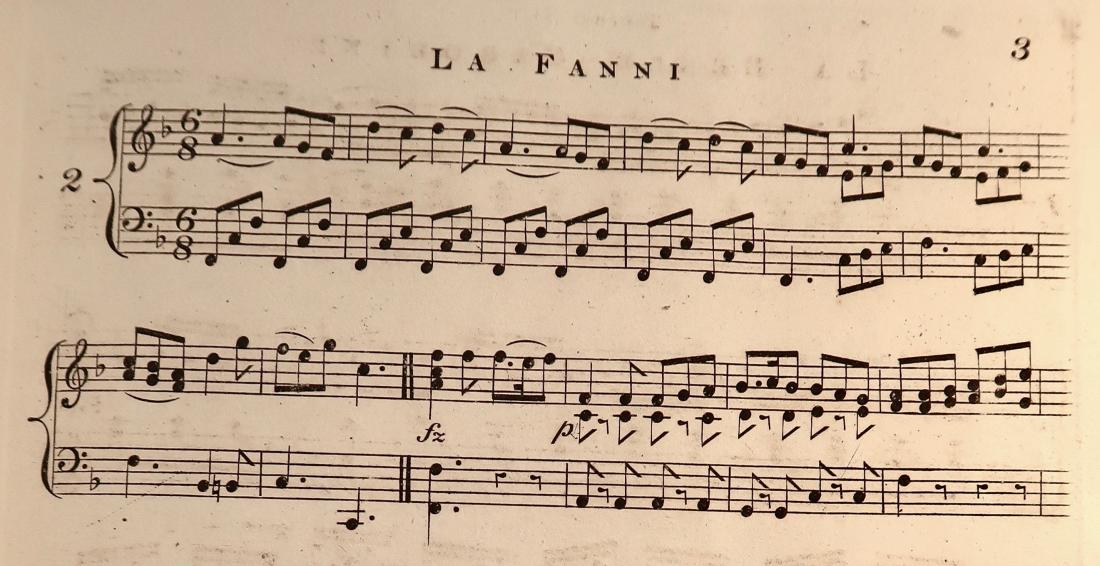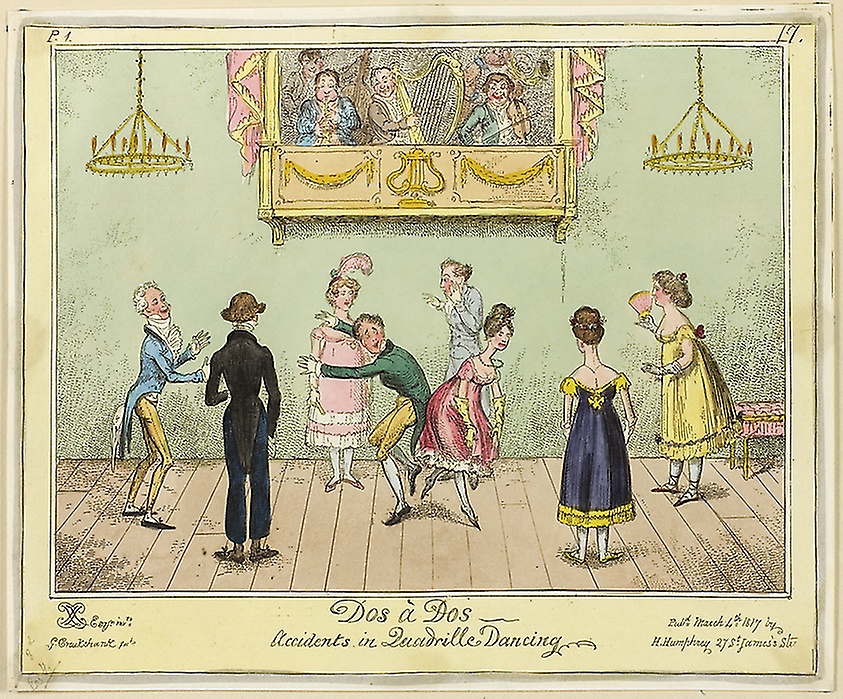
The York Quadrilles, 3rd Set (1819)
The York Quadrilles. A 3d [MS] Set of Quadrilles, as Performed at the York Winter Assemblies, Arranged for the Piano Forte (London: Chappell & Co., Goulding & Co.; York: Knapton, White & Knapton, [1819]), plate number 847.
La Belle Caroline – La Fanni – La Madelon – La Liberté – La Duchesse
Image courtesy of the British Library Board, Music Collections h.925.aa.(15.), p. 3
To download mp3 files either click on the three dots or right-click on the player and choose the save/download option.
Recording Details:
Rikki Wolpowitz - flute
Robert Percival - bassoon
Peter Moutoussis - horn
Taisia Sandetcaia and Wiebke Thormählen - violins
Henriette Poos - modern harp
Recorded at the Royal College of Music, London, 17 May 2021
SCORE: York Quadrilles 3rd Set
PARTS: York Quadrilles 3rd Set
Published sets of quadrilles arranged for piano or harp were extremely common in the first half of the nineteenth century. They combined five or six individual quadrilles, each with their own figures and their own titles. Like many quadrilles, the third set of York Quadrilles is derived at least partially from another musical work. The Miller and his Men by Isaac Pocock and Sir Henry Rowley Bishop was one of the most successful melodramas of its time. Premiering at Covent Garden on 21 October 1813, it featured robbers disguised as millers; the rescue of captive women from a cave; and a final catastrophic explosion, all of which captured the public’s imagination (Fuhrmann 2016). Princess Victoria later illustrated a number of scenes from the production as a teenager in the 1830s.
The York Quadrilles were danced during the 1819 York Winter Assembly season, but The Miller and his Men had been staged at the Theatres Royal in York and Hull during 1814, ensuring that local audiences were familiar with the production. The second quadrille in the set, La Fanni, is based on the opening song ‘When the Wind Blows’, a pastoral-style round sung by three millers in a format not dissimilar to a glee. It was clearly published to serve the domestic market, with the score indicating where cuts could be made “when not intended for the Stage”.
The score of the York Quadrilles as a whole gives no indication of derivative works, instead relying on aural detection. Only the second quadrille comes from The Miller and his Men; while the remaining quadrilles are likely derived from other works, it is possible that original material has been mixed with arrangements. It requires some detective work, for what would have been obvious to an early nineteenth-century audience remains more obscure to us today.
The scoring for flute, bassoon, horn, 2 violins and harp is similar to that depicted in George Cruikshank’s image below. By contrast, Bishop’s scoring for The Miller and his Men contained flute, pairs of oboes, clarinets, bassoons, horns and trumpets, trombone, strings and timpani (Pisani 2014).
Further Reading:
Fuhrmann, Christina. 2016. “Between Opera and Musical: Theatre Music in Early Nineteenth-Century London.” In The Oxford Handbook of the British Musical, edited by Robert Gordon and Olaf Jubin, 65-90. Oxford: Oxford University Press, 2016.
Pisani, Michael V. 2014. Music for the Melodramatic Theatre in Nineteenth-Century London & New York. Iowa City: University of Iowa Press.
Newspaper References:
Performances of The Miller and his Men in Yorkshire: Hull Packet 25 January and York Herald 14 May 1814

George Cruikshank, ‘Dos à Dos - Accidents in Quadrille Dancing’ (London: H. Humphrey, 1817), The Art Institute of Chicago.
